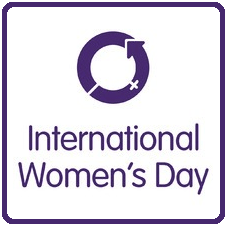The State of Women on International Women’s Day
Mar 7th, 2012 | By admin | Category: Family PlanningBy Suzanne York, HowMany.org, March 7, 2012
 In the midst of all the political attacks on contraceptive coverage and women’s rights here in the U.S., it is more important than ever that we celebrate International Women’s Day on March 8th.
In the midst of all the political attacks on contraceptive coverage and women’s rights here in the U.S., it is more important than ever that we celebrate International Women’s Day on March 8th.
It’s hard to believe that in the U.S., a country which has the highest rates of unplanned pregnancy (approximately 50%) and teen pregnancy in the industrialized world, we are still fighting over a woman’s right to control her own reproductive health.
Worse, according to Amnesty International, between two and three women die every day during pregnancy and childbirth in the U.S. And data from the Centers for Disease Control and Prevention show that black women are three times more likely to die from pregnancy and childbirth than their white counterparts.
Globally, approximately 1,000 women die every day from preventable causes related to pregnancy and childbirth.
Worldwide, it’s disheartening that 215 million women want to avoid getting pregnant but do not have access to contraception. Thesewomen and their families represent roughly 1 billion of the earth’s poorest residents.
Simply put, it’s mind-boggling that people don’t get that when you improve and empower the lives of women everywhere, everyone benefits, even the environment. Nicholas Kristof, columnist with the New York Times, sees voluntary family planning “as a cost-effective strategy to reduce poverty, conflict, and environmental damage.” Providing family planning is a win-win for people and the planet, and it is one of the easier and more inexpensive ways of helping both.
When women are empowered, they tend to marry later, have smaller families, educate both sons and daughters, are economically better off, and are healthier. Investing in women’s education and health can significantly slow population growth and improve lives. Increasing men’s awareness of the issues is also critical.
Until we commit to policies that support women, we can expect to see continued dis-empowerment in terms of land rights, poverty, lower female literacy, higher rates of fertility in poor and marginalized communities and countries, more women dying in childbirth and more unwanted/unplanned pregnancies. Let’s take the high road and invest in programs that make a difference for women.
How can we make make the next International Women’s Day even better? Here are just a few things that can be done that the world should be doing anyway:
- Education and job opportunities for womenContinue to insist that our politicians and international organizations work to provide these worldwide. Data shows that when women have education and job opportunities, they choose to have smaller families.
- Ensure access to reproductive healthEnsure voluntary and global access to reproductive health care and a woman’s right to choose. Increase funding for international family planning initiatives. U.S. assistance for family planning and reproductive health in 2012 is $610 million. The United Nations predicts that demand for contraceptives will rise 40 percent during the next 15 years.
- Promote gender equalityEnd disadvantages facing women and girls and invest in their education, health, and economic opportunities. Included in this is recognizing property rights for women; lack of access to and control over land by women is a key factor contributing to their poverty.
As we recognize the 101st International Women’s Day, let’s work to create a new agenda that recognizes the importance of empowering women — through better health care and access to family planning services, reproductive freedom, education, improved economic opportunities, and gender equality — so we can build a stronger society and protect our environment at the same time.
Suzanne York is a senior writer with the Institute for Population Studies/HowMany.org.
